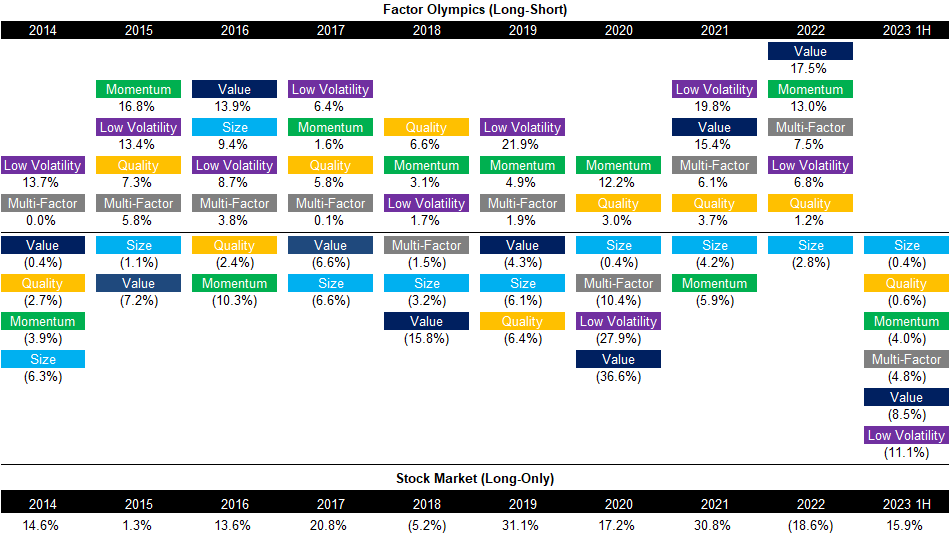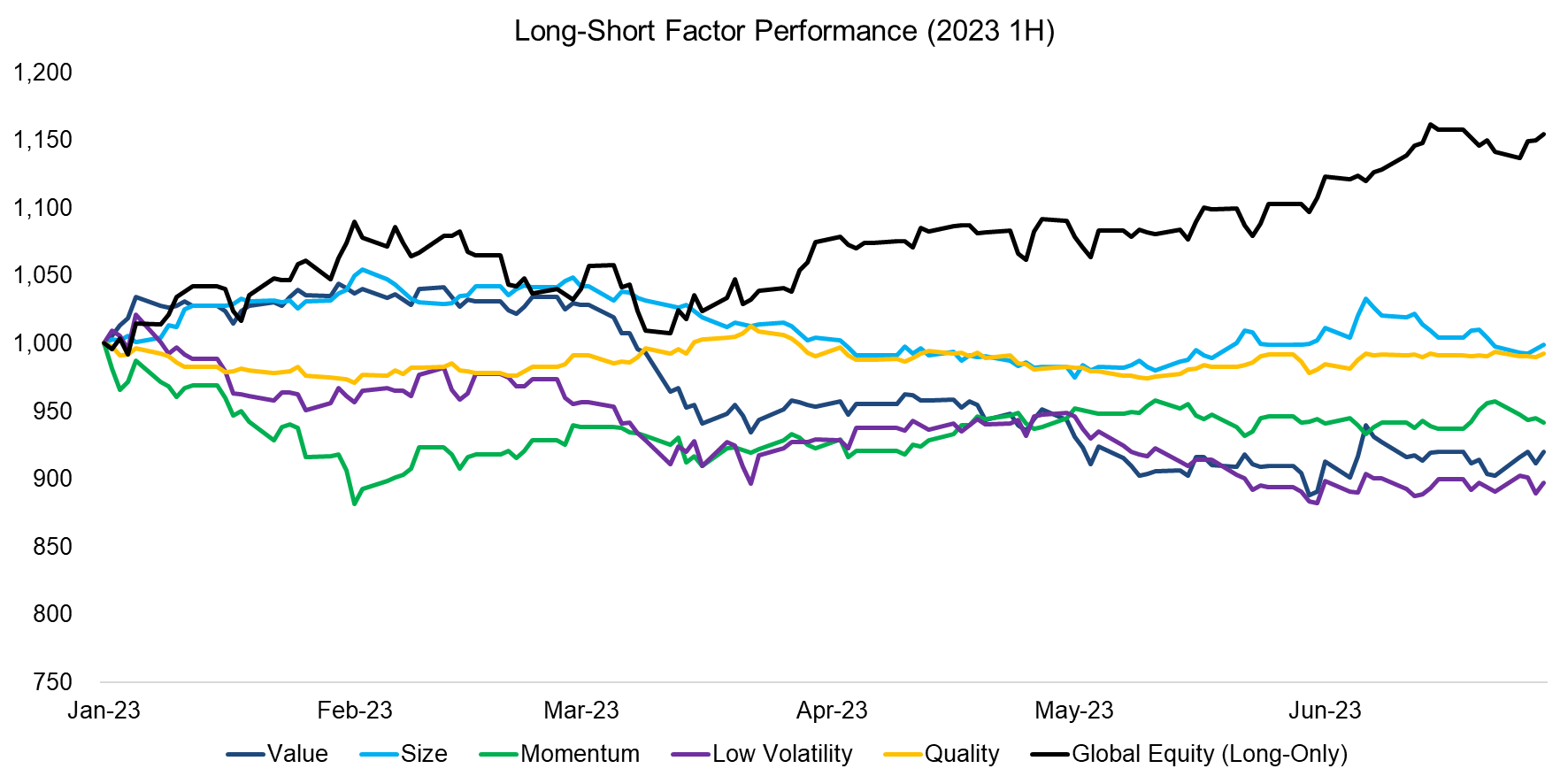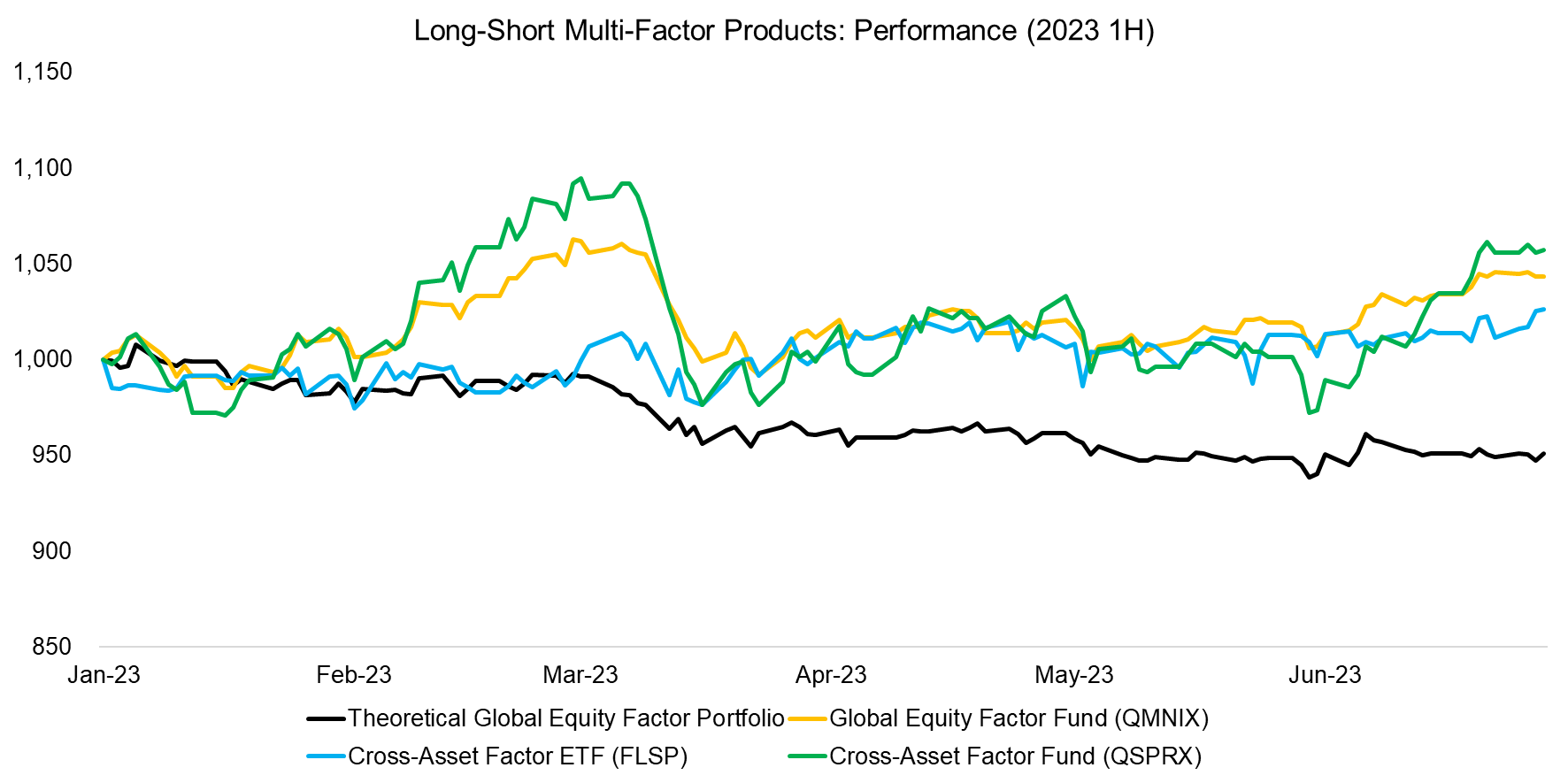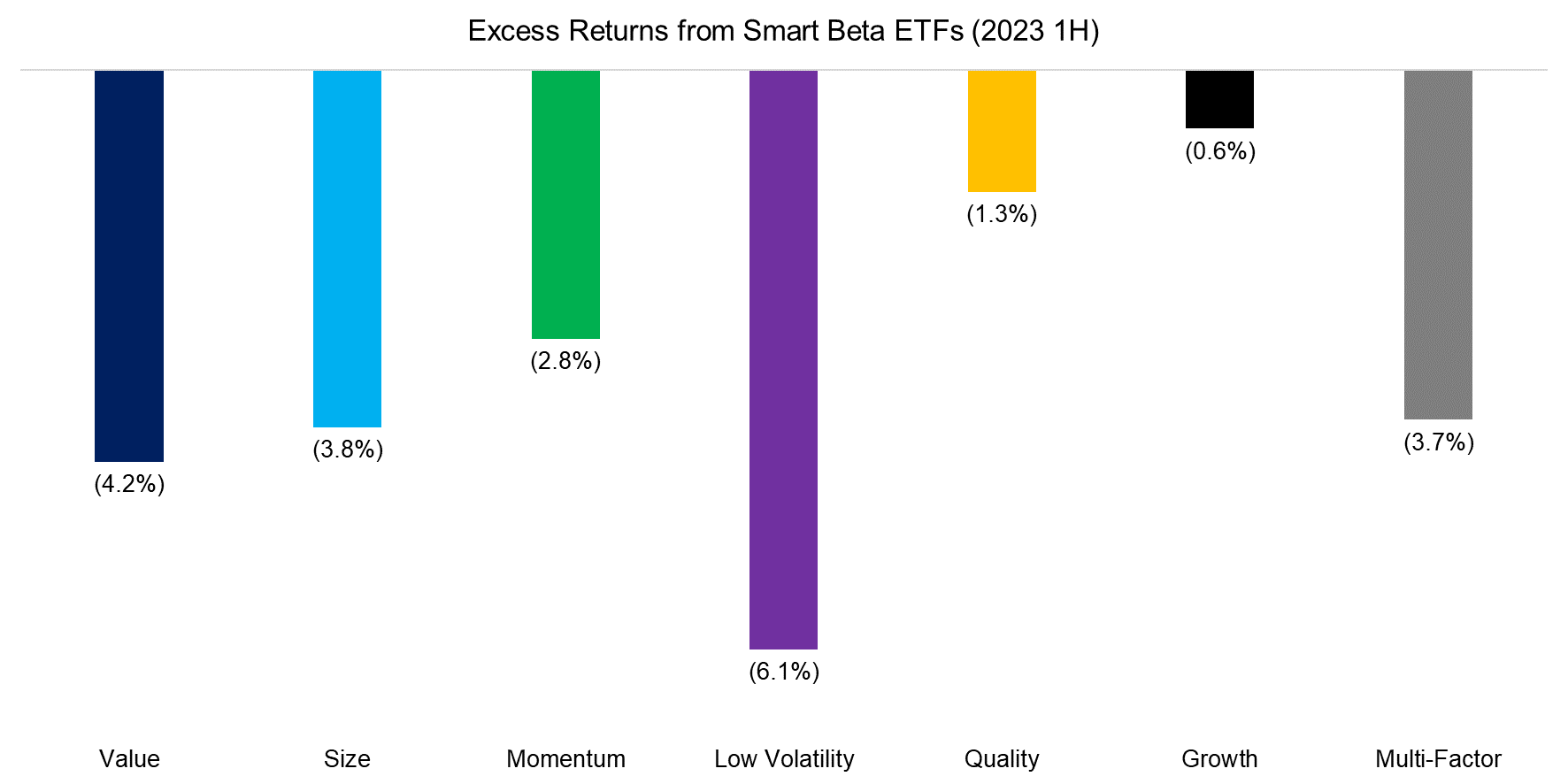Factor Olympics 2023 1H
And the winner is…
July 2023. Reading Time: 10 Minutes. Author: Nicolas Rabener.
SUMMARY
- All popular factors generated negative excess returns in 1H 2023
- Small caps performed best, low-risk stocks worst
- Somewhat surprisingly, long-short multi-factor products produced positive returns
INTRODUCTION
We present the performance of five well-known factors on an annual basis for the last 10 years. Specifically, we only present factors where academic research supports the existence of positive excess returns across market cycles and asset classes.
METHODOLOGY
Our factors are created by constructing long-short beta-neutral portfolios of the top and bottom 30% of stocks. Only stocks with a minimum market capitalization of $1 billion are included. Portfolios rebalance monthly and transactions incur 10 basis points of costs.
FACTOR OLYMPICS: GLOBAL RETURNS
The table below shows the long-short factor performance for the last 10 years ranked top to bottom. The global series is comprised of all developed markets in Asia, Europe, and the US. Aside from displaying the factor performance, the analysis highlights the significant factor rotation in terms of profitability from one year to the next, highlighting the benefits of diversified exposure.
The first half of 2023 can only be described as an annus horribilis as all factors generated negative returns, which represents the worst (half) year over the last decade and an almost complete reversal of 2022 where factor performance was strong and positive for almost all factors. There was no place to hide for investors pursuing factor investing.

Source: Finominal
TRENDS IN GLOBAL FACTOR PERFORMANCE
We observe that there were almost consistent losses for cheap and low-risk stocks, while momentum-driven stocks were essentially flat from February onwards. High-quality and small caps also traded sideways on a relative basis.
The poor performance of factors compared to last year is perhaps surprising as the narrative has not changed. Inflation remains stubbornly high and central banks are raising interest rates accordingly. However, it seems the enthusiasm for growth stocks from the previous decade has revived with the Nasdaq outperforming the S&P 500 year-to-date, and some stocks like the semi-conductor company NVIDIA Corporation reaching excessive valuations.

Source: Finominal
PERFORMANCE OF LONG-SHORT MULTI-FACTOR PRODUCTS
There are only a few liquid alternative mutual funds and ETFs that provide exposure to factors in the long-short format as seen in academic research. Given the poor performance of factor investing in recent years, many products were liquidated.
We compare the performance of three surviving products to that of the theoretical equal-weighted multi-factor portfolio. Somewhat surprisingly, the three products have all generated positive returns in the first half of 2023, compared to a loss for the theoretical performance. In previous years, the returns were more similar, and usually, the backtested portfolio outperformed the products given faulty assumptions on transaction and market impact costs.

Source: Finominal
SMART BETA EXCESS RETURNS
Although investors should allocate to factors constructed as long-short portfolios given that these offer high diversification benefits, most invest via long-only smart beta ETFs (read Smart Beta vs Alpha + Beta). Following the money, we highlight the excess returns generated from investing in smart beta ETFs in the US, which represents a universe of 160+ products and approximately $800 billion of assets under management. We also show the performance of the growth factor, which is popular with investors but is not associated with positive excess returns over time (read What Are Growth Stocks?).
The returns can be different as long-short factor portfolios are constructed beta-neutral, i.e. there is a short portfolio and leverage is used to achieve beta-neutrality, and stocks are typically weighted equally. Smart beta ETFs are long-only and mostly weight stocks by their market capitalization.
We observe that the traditional factors namely value, size, momentum, low volatility, and quality generated negative excess returns in their smart beta versions, which mirrors the trends in long-short factors in the first half of 2023. Although the Nasdaq has been outperforming year-to-date, the growth factor has not produced positive returns.

Source: Finominal
FACTOR CORRELATIONS
The correlation matrix below highlights the global one-year factor correlations based on daily returns. The current correlations highlight a scenario that does not occur frequently as value, momentum, and low volatility factors are highly correlated. Interestingly this largely seems to apply to large caps as the size factor is negatively correlated to the momentum and low-volatility factors (read Factors: Correlation Check).

Source: Finominal
FURTHER THOUGHTS
2023 marks the death of another market-neutral multi-factor product, namely the Amundi iStoxx Europe Multi-Factor Market Neutral UCITS ETF (MKTN). The product was the only ETF available to European investors that were seeking pure long-short factor exposure as seen in academic research. The fund peaked at more than EUR 600 million of assets under management but dropped to below EUR 10 million in early 2023, when it was liquidated. Although it was cheap at 0.55%, the performance was worse than comparable products like QMNIX, which can be attributed to security selection and portfolio construction.
RELATED RESEARCH
Shorting Lousy Stocks = Lousy Returns?
Outperformance Ain’t Alpha
Improving the Odds of Value Investing
The Value Factor’s Pain: Are Intangibles to Blame?
Smart Beta vs Alpha + Beta
How Painful Can Factor Investing Get?
ABOUT THE AUTHOR
Nicolas Rabener is the CEO & Founder of Finominal, which empowers professional investors with data, technology, and research insights to improve their investment outcomes. Previously he created Jackdaw Capital, an award-winning quantitative hedge fund. Before that Nicolas worked at GIC and Citigroup in London and New York. Nicolas holds a Master of Finance from HHL Leipzig Graduate School of Management, is a CAIA charter holder, and enjoys endurance sports (Ironman & 100km Ultramarathon).
Connect with me on LinkedIn or X.

